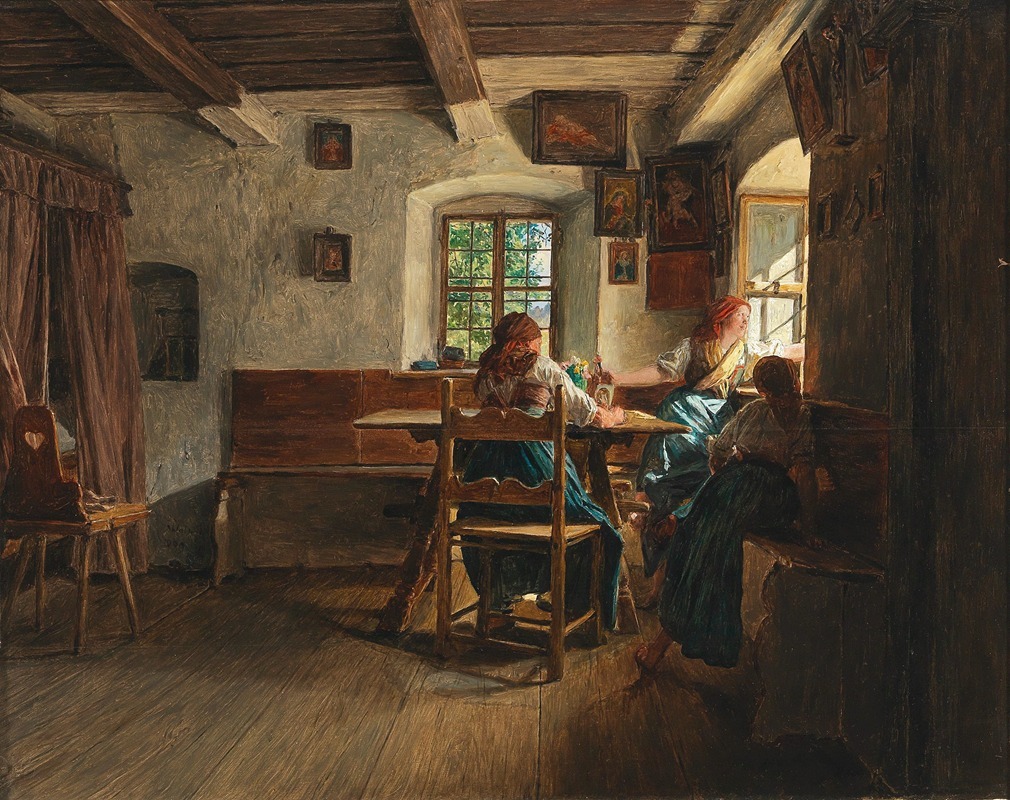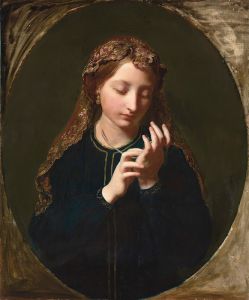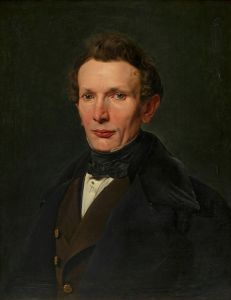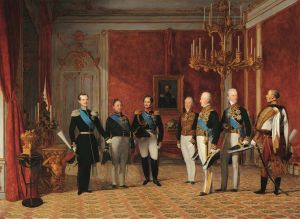
Der Abschied
A hand-painted replica of Ferdinand Georg Waldmüller’s masterpiece Der Abschied, meticulously crafted by professional artists to capture the true essence of the original. Each piece is created with museum-quality canvas and rare mineral pigments, carefully painted by experienced artists with delicate brushstrokes and rich, layered colors to perfectly recreate the texture of the original artwork. Unlike machine-printed reproductions, this hand-painted version brings the painting to life, infused with the artist’s emotions and skill in every stroke. Whether for personal collection or home decoration, it instantly elevates the artistic atmosphere of any space.
Ferdinand Georg Waldmüller was an Austrian painter renowned for his contributions to the Biedermeier period, a style that flourished in Central Europe between 1815 and 1848. One of his notable works is "Der Abschied" (The Farewell), which exemplifies his skill in capturing detailed, emotive scenes.
"Der Abschied" was painted in 1835, during a time when Waldmüller was deeply engaged in portraying the everyday lives of people with a remarkable degree of realism and emotional depth. This painting is a poignant depiction of a farewell scene, showcasing Waldmüller's mastery in rendering human expressions and interactions.
The composition of "Der Abschied" is carefully structured to draw the viewer's attention to the central figures. The painting features a young couple parting ways, with the man dressed in a military uniform, suggesting that he might be leaving for service. The woman, dressed in traditional Biedermeier attire, appears sorrowful, her body language and facial expression conveying a deep sense of loss and longing. The emotional intensity of the scene is heightened by Waldmüller's meticulous attention to detail, from the folds of the clothing to the expressions on the characters' faces.
Waldmüller's use of light and color in "Der Abschied" is particularly noteworthy. He employs a naturalistic palette, with soft, warm tones that enhance the intimate and melancholic atmosphere of the scene. The background, though less detailed, provides a serene contrast to the emotional foreground, with a landscape that hints at the broader world beyond the immediate moment of parting.
The painting is also significant for its historical context. During the Biedermeier period, there was a strong emphasis on family values, domestic life, and personal emotions, partly in response to the political repression and social upheaval of the time. "Der Abschied" reflects these themes, capturing a private moment that resonates with the broader cultural sentiments of the era.
Ferdinand Georg Waldmüller's works, including "Der Abschied," are celebrated for their technical excellence and their ability to convey deep emotional truths. His paintings often provide a window into the lives and emotions of ordinary people, making them timeless pieces that continue to speak to audiences today.
"Der Abschied" remains an important example of Waldmüller's oeuvre, showcasing his ability to blend technical skill with emotional depth. It stands as a testament to his place in art history as a master of the Biedermeier style and a keen observer of human nature. The painting is housed in the Belvedere Museum in Vienna, where it continues to be admired by art enthusiasts and scholars alike.


















